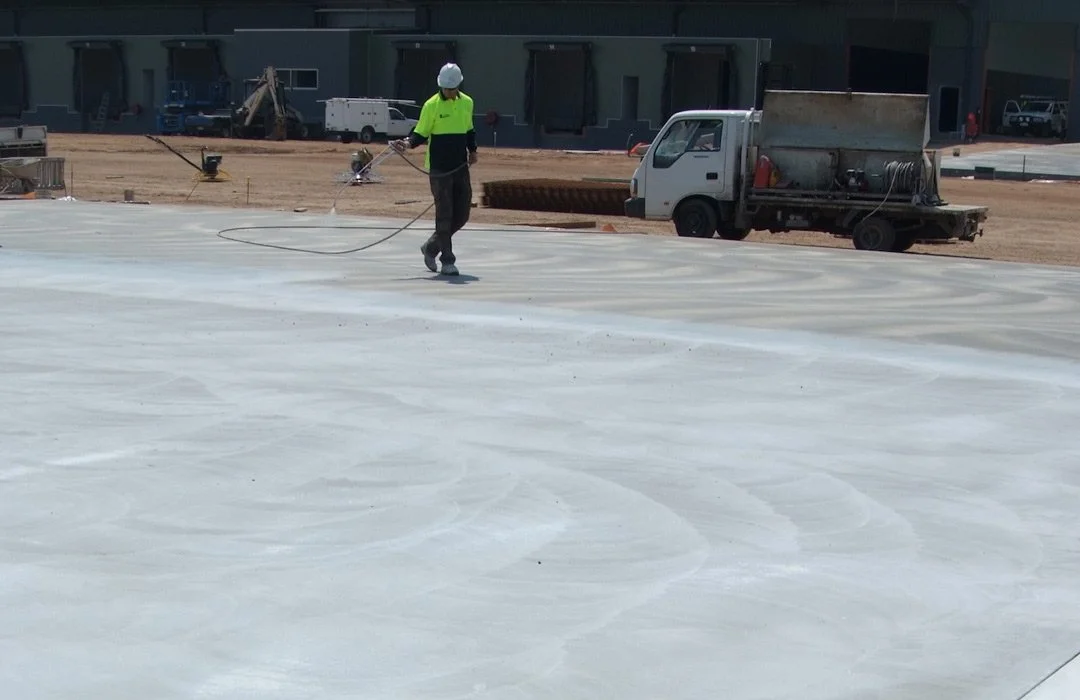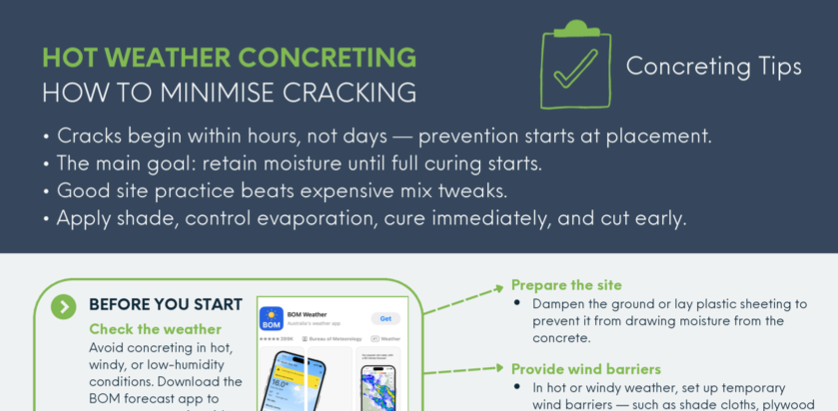
Choose Complete
Concreting Tips
At Complete Lintels Building Supplies, we provide practical advice backed by Cement Concrete & Aggregates Australia, to help you achieve high-quality concrete finishes. Our resources outline key steps for successful placement and curing in hot weather — from proper site preparation and wind protection, to moisture control, vibration, and early joint cutting. You’ll find clear guidance on preventing cracking, minimising evaporation, and maintaining surface strength and appearance. All information is aligned with industry best practice to ensure your concrete performs at its best — durable, consistent, and built to last.
Take precautions when pouring in hot conditions. The factsheet below gives you clear, practical tips for placing, finishing, and curing concrete in hot or windy weather — helping you prevent cracks, surface defects, and premature drying. These guidelines are here for your day-to-day concreting work, helping you achieve consistent, durable results in challenging conditions.
Downloads
Hot Weather Concreting
What topics are covered in this factsheet?
-
Follow best practices for temperature, wind, and humidity to achieve strong, durable results.
-
Check the weather, prepare the site, and plan for shade or wind barriers to prevent early moisture loss.
-
Place concrete quickly, protect surface moisture with evaporation retarders, and ensure proper compaction.
-
Begin curing immediately after finishing to retain moisture and strengthen the concrete.
-
Saw cut early to manage shrinkage and prevent random cracking.
We stock Aardcure AA at our Riverstone Warehouse
Aardcure AA is a low viscosity aliphatic alcohol blend in an aqueous solution. Aardcure AA is applied to freshly placed concrete surfaces, to reduce rapid water evaporation during the critical finishing period of the concrete, particularly under adverse weather conditions such as high temperature, high winds and low humidity.
FAQ’s
-
Aliphatic alcohol is an evaporation retarder. It is a surface film applied to freshly placed concrete to slow the rate of moisture loss from the surface during finishing operations. When concrete is placed in hot, dry, or windy conditions, surface water can evaporate faster than bleed water rises. This imbalance can cause the surface to dry out and shrink prematurely, resulting in plastic shrinkage cracking — fine cracks that appear before the concrete sets. It is critical that application occurs prior to any cracking.
-
To prevent this, the evaporation retarder should be lightly misted over the surface as soon as finishing begins — typically after screeding and bull-floating, once bleed water sheen has dissipated but before the concrete starts to set. The key is timing: it must be applied before any visible cracking occurs, as retarders are preventative, not corrective. If applied too late, they will not close existing cracks or restore lost moisture.
The retarder creates a temporary monomolecular film that reduces the evaporation rate by up to 80%, helping the surface remain workable for longer and minimizing the risk of crusting or tearing during troweling.
-
Reapplication may be required if finishing operations are prolonged or if wind and temperature increase. The retarder does not interfere with curing compounds and can be safely re-applied during finishing without affecting bond or appearance.
Need more resources?
Download all of our latest brochures
Get in touch.
If you have any queries relating to our concreting tips, please message us today and we will be in touch.





